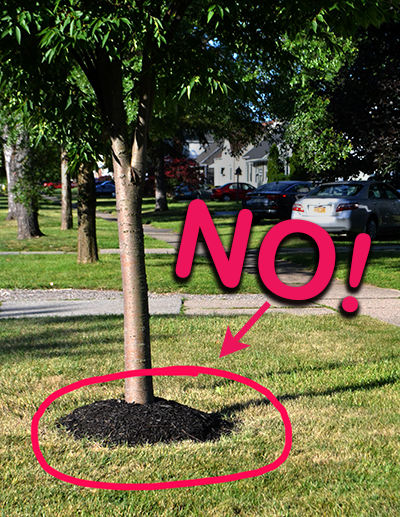Sustainable Landscaping Checklist
- Tuesday, 15 April 2025 08:00
- Last Updated: Monday, 21 April 2025 08:19
- Published: Tuesday, 15 April 2025 08:00
- Conservation Advisory Council
- Hits: 6643
 As the weather warms and we all get ready to enjoy our yards and neighborhood landscape, here are some ways to improve the sustainability of your surroundings:
As the weather warms and we all get ready to enjoy our yards and neighborhood landscape, here are some ways to improve the sustainability of your surroundings:
Go Organic: Organic yard care gives us a beautiful, healthy, thriving landscape, and it’s also beneficial to us, our pets, wildlife, and the environment. Many organic products, such as fertilizer and weed control, are readily available. Organic landscaping can be accomplished whether you do your own yard work or hire a landscaper. Read the CAC’s previous article about organic landscaping.
Plant Trees: Trees enhance the beauty of our community, provide shade, soak up water, and help wildlife. Trees absorb carbon dioxide as they grow, further helping the environment. Whenever possible, plant native trees and plants --those that grow naturally in our area--as they are better suited to our climate and terrain. Once established, native trees can thrive with less water and fertilizer (and no pesticides), saving time and money.
Plant Perennials that Attract Pollinators: Butterflies, bees, and birds play an important role in our environment. Plants that attract these pollinators add beauty to our landscape while helping make our world healthy. Replacing part of your lawn with native plants is an inexpensive, simple way to support a healthy environment and to reduce costly lawn maintenance. Some plants to consider include coreopsis, Joe-pye weed, butterfly weed, aster, purple coneflower, salvia, and sedum.
Spare the Mulch: Placing mulch in garden beds and around trees can help keep moisture in and weeds out. However, too much mulch or improperly placed mulch can seriously harm trees and shrubs. Never pile mulch (or soil) against the trunk of a tree because the mulch will eventually rot the trunk as well as cause roots to grow in the wrong direction. Keep mulch approximately 6” away from tree trunks and about 3” deep in plant beds and around trees.
Water Wisely: To encourage stronger and more drought-resistant plants--and therefore, healthier lawns--water your lawn 2 times per week for a total of 1’’ of water, usually around 30 minutes per watering. Watering should be done in the early morning when the most absorption takes place. Use drip hoses to water trees and shrubs. Experts estimate that as much as 50 percent of water used for home irrigation is wasted due to overwatering and evaporation. Although Scarsdale requires all home irrigation systems to have a rain sensor--which shuts down the system when it’s raining—an even better way to go would be to add a smart water controller, which uses a WiFi connection to access weather data from the internet to automatically adjust watering schedules. Help save water and reduce your water bill.
Properly Care for Your Lawn: Keep grass about 3” high to promote deeper roots and a healthier, more drought-tolerant lawn. Taller grass is also less susceptible to weeds. Leave grass clippings on your lawn as they provide a natural fertilizer and help the soil retain water. Leaving lawn clippings also reduces the use of gas-powered blowers--a leading contributor to air and noise pollution--which are banned by the Village from June 1st through September 30th. Using high-powered electric or battery-operated blowers to clean driveways and walkways is a viable alternative.
Talk with Your Landscaper: Sometimes old habits are not easy to break, so it’s important to share information and to let your landscaper know that you want an organic, healthy, sustainable yard.
If you have any questions or comments, contact the Scarsdale Conservation Advisory Council.










